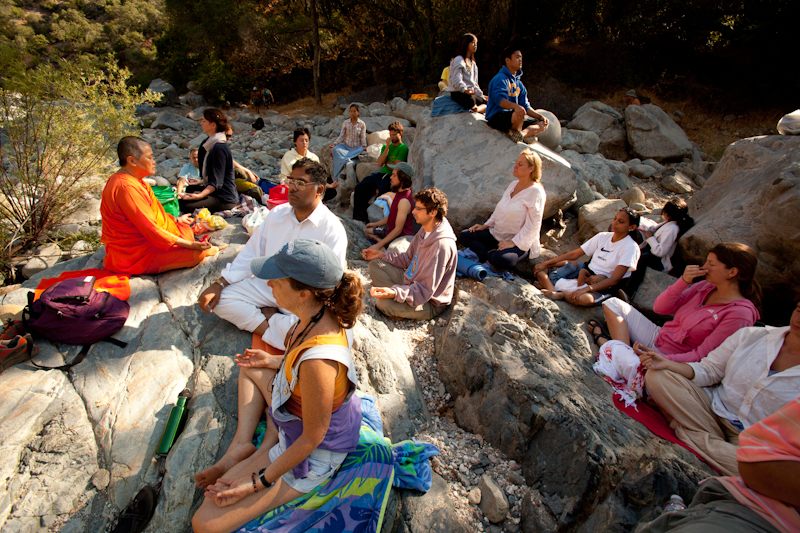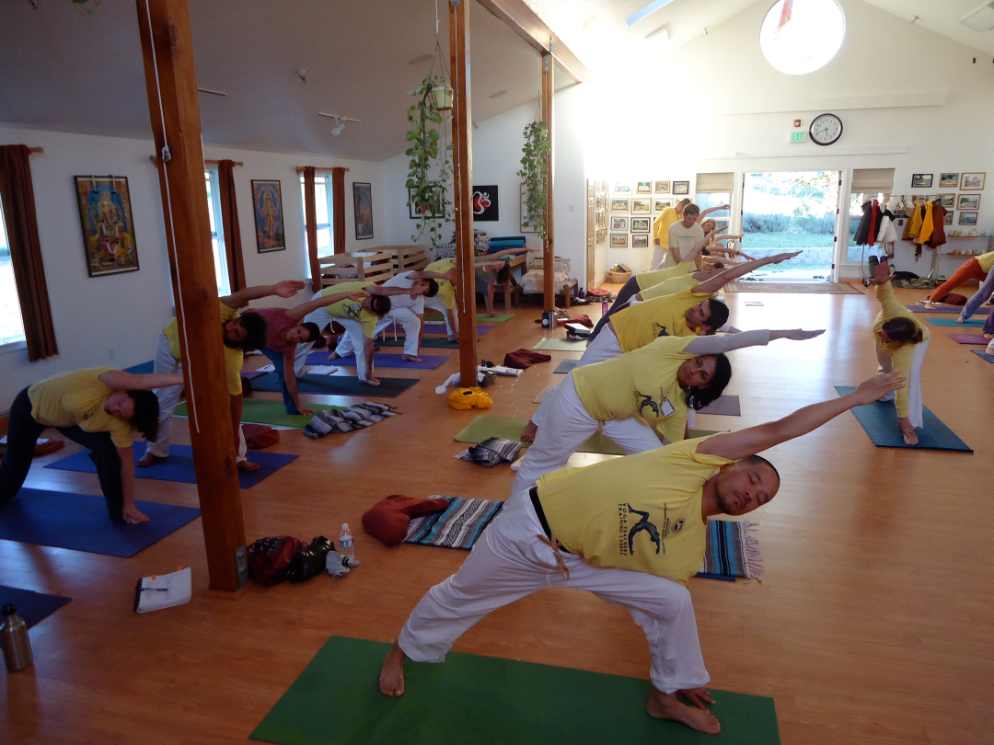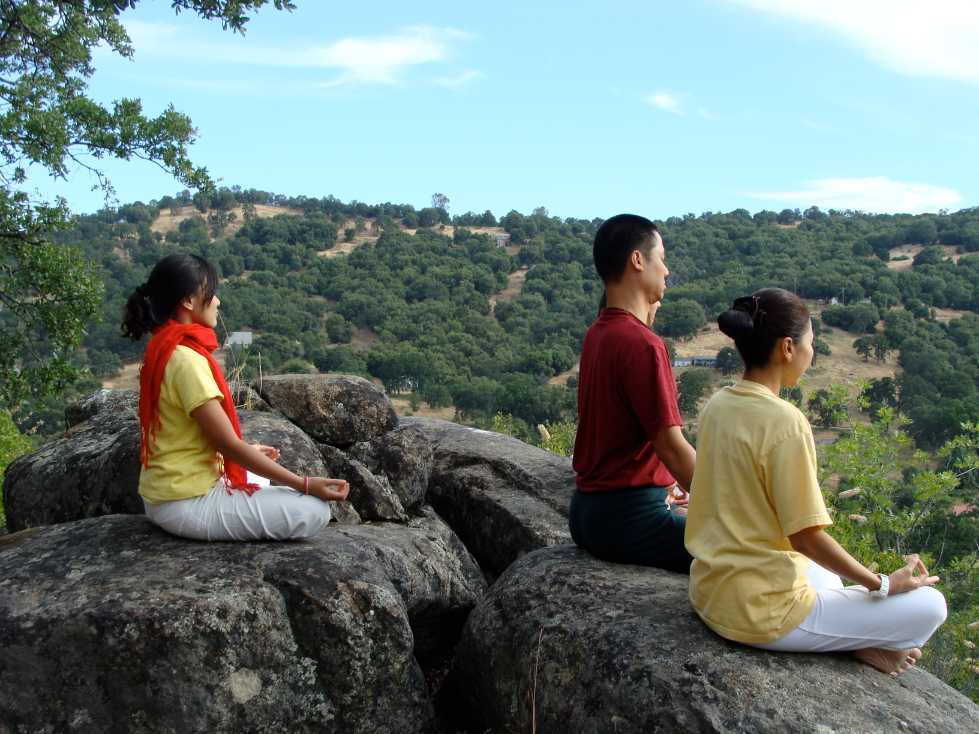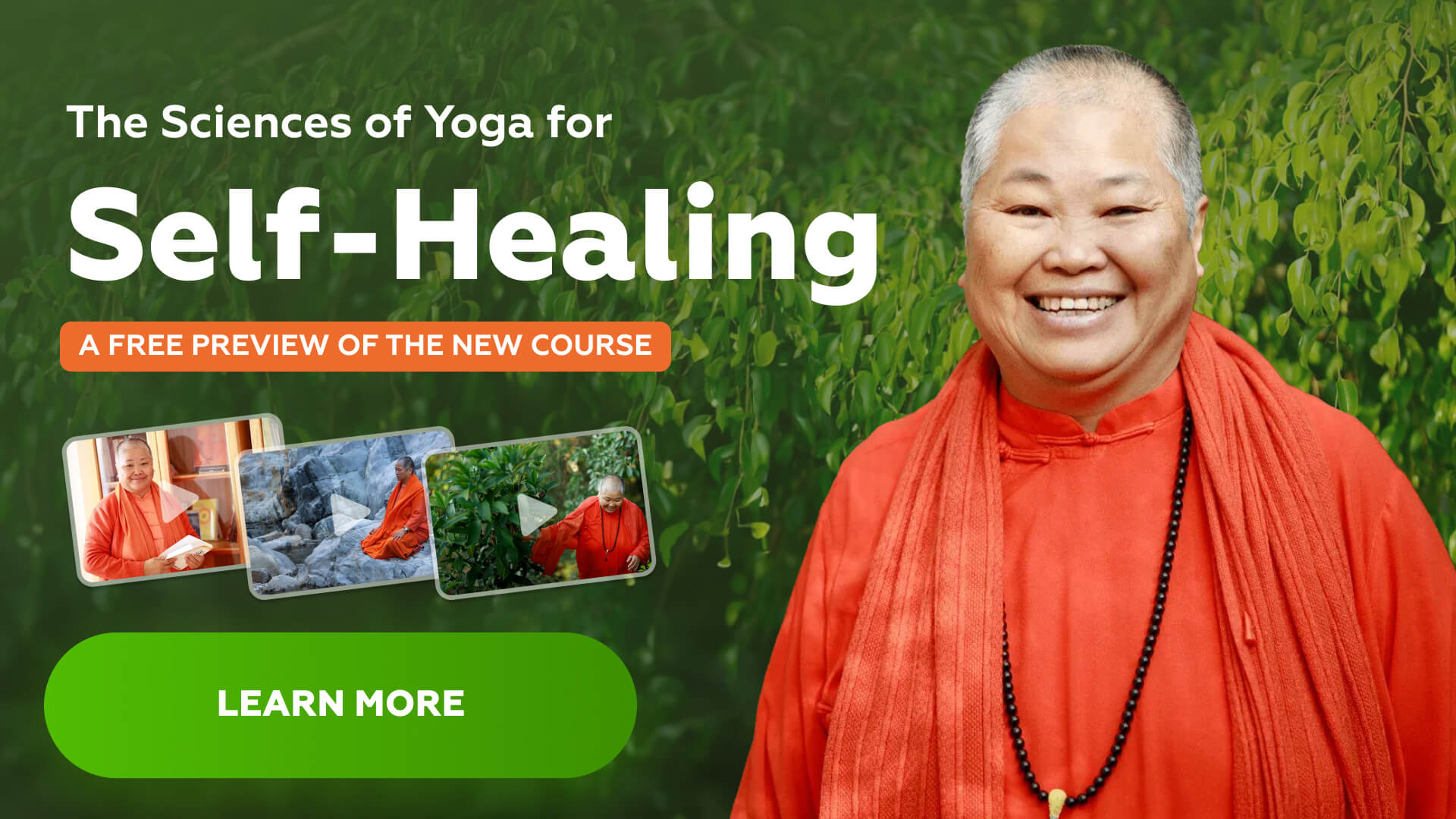RAJA YOGA
What is Raja Yoga? | What are the eight limbs? | What is ashtanga yoga?
Below is a testimonial for this book.
Raja Yoga
Quote: “In the beginning of your Sadhana, you will encounter various difficulties. You will not be conscious of any spiritual progress, but you will be conscious of your failures in your attempts in meditation, the resistance you meet, your defects and weaknesses.”
– Swami Sivananda in “Sivananda Upanishad”
Raja Yoga is the path of systematic analysis and control of the mind.
Compiled by Patanjali Maharishi, Raja Yoga is also known as Ashtanga Yoga, because its practices can be divided into eight limbs.
Hatha Yoga, Kundalini Yoga, and Mantra Yoga are all parts of Raja Yoga.
The goal is to control the chitta vrittis, or thought waves, and thus attain the super-conscious state of mind, the final goal.

Ashtanga Yoga – The eight limbs
#1 Yamas – the restrictions
-
- Ahimsa – non violence, non injury. Vegetarianism is part of the practice of ahimsa. The great Indian saint Gandhi is famous for the practice of ahimsa
- Satya: truthfulness, not telling lies.
- Brahmacharya: chastity, sublimation of sexual energy.
- Asteya: non-stealing, non covetousness, lack of jealousy.
- Aparigraha: non-accepting of gifts or bribes.
#2 Niyamas – the observances
-
- Saucha: purity (external and internal).
- Santosha: contentment.
- Tapas: austerity.
- Swadhyaya: study of religious scripture.
- Ishwara Pranidhana: worship of the Lord, surrender of the ego.
#3 Asana – steady pose
For spiritual pursuit, as for any other pursuit in life, a healthy and strong system is essential. A steady mind presupposes a steady body.
#4 Pranayama
Control of the vital energy
#5 Pratyahara
withdrawal of the senses from objects
#6 Dharana
Concentrating the mind upon either an external object or an internal idea, to the exclusion of all other thoughts.
#7 Dhyana
Meditation is defined as an unbroken flow of thought towards God to the exclusion of other sensual perception.
#8 Samadhi
super-conscious state
Note that the Yamas and Niyamas constitute the ethical foundation of the Yoga practice, straighten out the mind, and help reduce agitations and restlessness.
Asana, Pranayama and Pratyahara are external practices, while Dharana, Dhyana and Samadhi are considered advanced internal practices.
Even though there is an idea of progression in the practices, one doesn’t have to wait for ethical perfection before attempting concentration and meditation.
In fact all the stages are involved together.
For example, one cannot meditate if one doesn’t have good posture and possess a certain calmness of breath, thus achieving an inner focus at the exclusion of everything else.

The practice of concentration is the preliminary practice for meditation
Concentration is holding one thought in the mind for a period of time.
Concentration brings power to the mind and makes the mind one-pointed, thus allowing peace and happiness to shine through.
Concentration implies effort and perseverance to bring the mind back to focus.
Concentration on an external object – like a candle flame (tratak) is easier then focusing internally on an abstract idea.
There are many exercises for concentration; for example, allowing the mind to think on a topic and everything related to the topic but nothing outside of the topic.
The mind is like a sheep tied to a post, and has to move in a smaller circle. The fewer thoughts you have in the mind, the more Peace you have. The more thoughts in the mind, the less Peace you have.
Concentration is like gathering the rays of the mind and applying them on a particular topic.
In the same manner that gathering the rays of the sun through a magnifying glass can burn a piece of paper, or gathering the water of a stream through a dam can produce electricity, the Yogi endeavors to have less thoughts, so the thoughts that remain in the mind will gain power and realization.
A concentrated person is much more productive, effective and peaceful, while a distracted person is unfulfilled, constantly changing topics, and never finishes anything.


5 States of Concentration
Through concentration, the mind moves through stages, and with the stages, develops more peace and happiness.
There are five states of concentration:
- dull state – there is unhappiness and depression
- scattered state of mind – there is unhappiness and restlessness
- gathered state of mind- the mind is more calm and productive
- one pointed state of mind- the mind is nearly in a meditative state
- and finally total absorption of the mind- the mind loses itself
The main contribution of Raja Yoga is the knowledge of the mind and how to harness the powers of the mind for higher purpose. Yoga Psychology is the knowledge of the mind in order to transcend the mind.
Yoga Teacher Training Course
Check out our 200-hour Yoga Alliance certified Yoga Teacher Training Courses offered twice a year in California, 3x in Vietnam, once in China and once in Japan.
Foundational Courses
Choose from upcoming courses for beginners and intermediate level students.
Yoga Vacation
Rejuvinate your body and mind. Experience and progress with daily Yoga classes. Learn the 12 basic asanas and pranayama. Enjoy daily meditation, chanting, and organic vegetarian meals.
